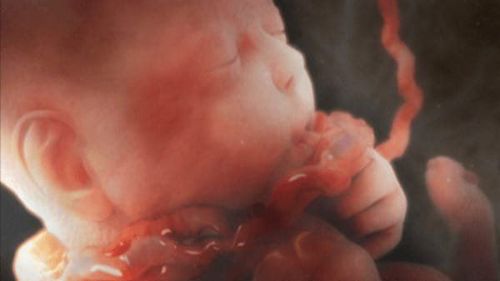This is an automatically translated article.
The article was consulted with Specialist Doctor I Nguyen Duc Thong - Anesthesiologist - General Surgery Department - Vinmec Danang International General Hospital.Epidural anesthesia is an anesthetic technique commonly indicated in surgery, in the relief of acute pain and chronic diseases. Another indication of an epidural that is being used a lot in recent times is to help relieve pain during labor, also known as the "painless delivery" method.
1. What is an epidural?
The epidural space is a virtual, closed space, bounded above by the occipital foramen, below by the sacral cleft, posteriorly by the yellow ligament, and anteriorly by the posterior longitudinal ligament. The epidural space contains all the nerve roots extending from the spinal cord, lymphatic system, fatty tissue, loose connective tissue, and the Baston venous plexus.Epidural Anesthesia is an anesthetic technique that is conducted by introducing local anesthetic into the epidural space for the purpose of inhibiting nerve conduction in a certain area controlled by nerve roots. The volume of the epidural space in Vietnamese is about 120-140ml, 1-2ml of local anesthetic will spread to 1 vertebral cavity. The mechanism to perform epidural anesthesia is that the nerves supply motor, sensory and autonomic nerves to the organs and skin of the body in segments. Based on this distribution, the anesthesiologist will assess the degree of numbness and predict possible complications.
Epidural anesthesia is a technique widely applied today due to many advantages such as:
Can be performed in any position of the spinal cord depending on the purpose of diagnosis, treatment, surgery; Can be combined with endotracheal anesthesia to help stabilize hemodynamics; Highly effective in reducing pain in the acute period after surgery, helping patients recover faster; Helps reduce adverse physiological responses caused by surgery such as lung and immune system dysfunction, cardiovascular system depression, tissue damage, ...
2. What is the effect of epidural anesthesia?

Anesthesia in surgery in the lower extremities, pelvis and lower abdomen,... Acute pain relief after regional surgeries chest, abdomen, pelvis, lower extremities; acute pain in the neck region; Acute pain in shingles,... Pain relief in chronic diseases such as pain from spinal degeneration, sciatica, pain due to vertebral collapse, polyneuritis due to diabetes, pain relief due to cancer,... Pain relief after surgery in the chest and abdomen What does an epidural do? In addition to the above indications, the use of epidural anesthesia to relieve pain in labor is also a common indication today. Usually, an epidural is performed when the cervix has dilated to 2-3 cm and the woman is in active labor. After being put into the epidural space next to the canal, the anesthetic will disperse to the surrounding areas, blocking the nerves that supply the parts that are subjected to a lot of force during labor, and the pain is lost. . You can feel uterine contractions but no longer feel pain. Because the anesthetic has only a local effect, the mother remains awake throughout the birth. Epidural anesthesia can be used in both cesarean and vaginal delivery. If switching to cesarean section, the anesthesiologist can inject an additional amount of local anesthetic (10 -15ML) through the plastic catheter (catheter) which is enough to completely suppress sensation in the pregnant woman's abdomen to ensure a comfortable surgery. benefit without pain.
*Epidural anesthesia to relieve pain during childbirth is also known as the "painless delivery" method, this method is especially useful in cases of difficult delivery, prolonged labor that makes the mother lose strength or the fetus has a miscarriage. high risks such as breech, twin pregnancy, preeclampsia and prolonged labor. Epidural anesthesia will help pregnant women relieve pain, resuscitate to continue the birth. Due to only local anesthesia, the mother is still aware of the whole process, feels the uterine contractions and has the ability to push herself. In case of difficult delivery and need to be converted to a cesarean section, local anesthetics are still effective and help reduce pain after surgery. Epidural anesthesia does not increase the rate of cesarean section or instrumental intervention in delivery. Epidural anesthesia for cesarean section reduces maternal mortality compared with general anesthesia.
3. How is epidural anesthesia for pregnant women performed?

4.What are the adverse effects of epidural anesthesia on the health of pregnant women and fetuses?

Anesthesia causes varicose veins to increase the risk of hypotension in pregnant women. Some pregnant women will have symptoms such as nausea, sweating, tremors, shortness of breath... To limit this situation, women are often given fluids before anesthesia, at the same time, mother's blood pressure, heart rate. The fetus is closely monitored by an obstetric monitor system. Back pain: After giving birth, some women who receive an epidural have a feeling of back pain. However, recent studies have proven that back pain is a common feeling in pregnant women, compared with women who give birth vaginally, epidural anesthesia does not cause back pain more. Headaches: Pregnant women may experience headaches a few days after giving birth, which usually goes away on their own after a few days without treatment. However, doctors can prescribe pain relievers, infusions, instructions on lying position, how to rest... to relieve pain for pregnant women. In the case of epidural puncture needle headache, which often causes severe headache during movement, this will be treated by injecting 10-20 ML of the patient's blood into the puncture site for epidural anesthesia (called epidural). is the technique of blood patching or blood patching). In addition, the epidural technique may fail or be ineffective, affecting the health of the mother due to the wrong position of the epidural catheter. If the catheter goes into a blood vessel in the back, the anesthetic goes straight into the blood vessel causing anesthetic poisoning, the mother will feel a metallic taste in the tongue, numbness in the lips, ringing in the ears,... This condition is seen in About 5% of cases, at this time, the mother must notify the anesthesiologist if this condition occurs. In addition, in rare cases, local anesthetics have entered the spinal fluid, causing complications from large areas of anesthesia. Patients will receive intensive treatment in these cases.
Overall, epidural analgesia for pregnant women during labor is a widely practiced technique. The success rate and satisfaction of women with this technique is very high.
For peace of mind when entering a vaginal birth, many women now choose an epidural in Vinmec's maternity package to relieve pain during labor. This technique is performed when the uterine contractions become stronger and the mother has no abnormalities in the test results. This method allows labor to take place in the most ideal conditions.
Currently, epidural anesthesia technique has been applied at Vinmec, in addition to helping pregnant women relieve pain during labor, this anesthetic technique is also used in surgery and treatment. when specified. At Vinmec, there is a team of professional and experienced anesthesiologists, epidural techniques are conducted under ultrasound guidance to help minimize possible complications. In addition, now we use the self-controlled intermittent automatic drug pump (PIEB + PCEA) to provide the best pain relief and minimize the side effects of the anesthetic, making the patient comfortable, satisfied at birth.
Please dial HOTLINE for more information or register for an appointment HERE. Download MyVinmec app to make appointments faster and to manage your bookings easily.














